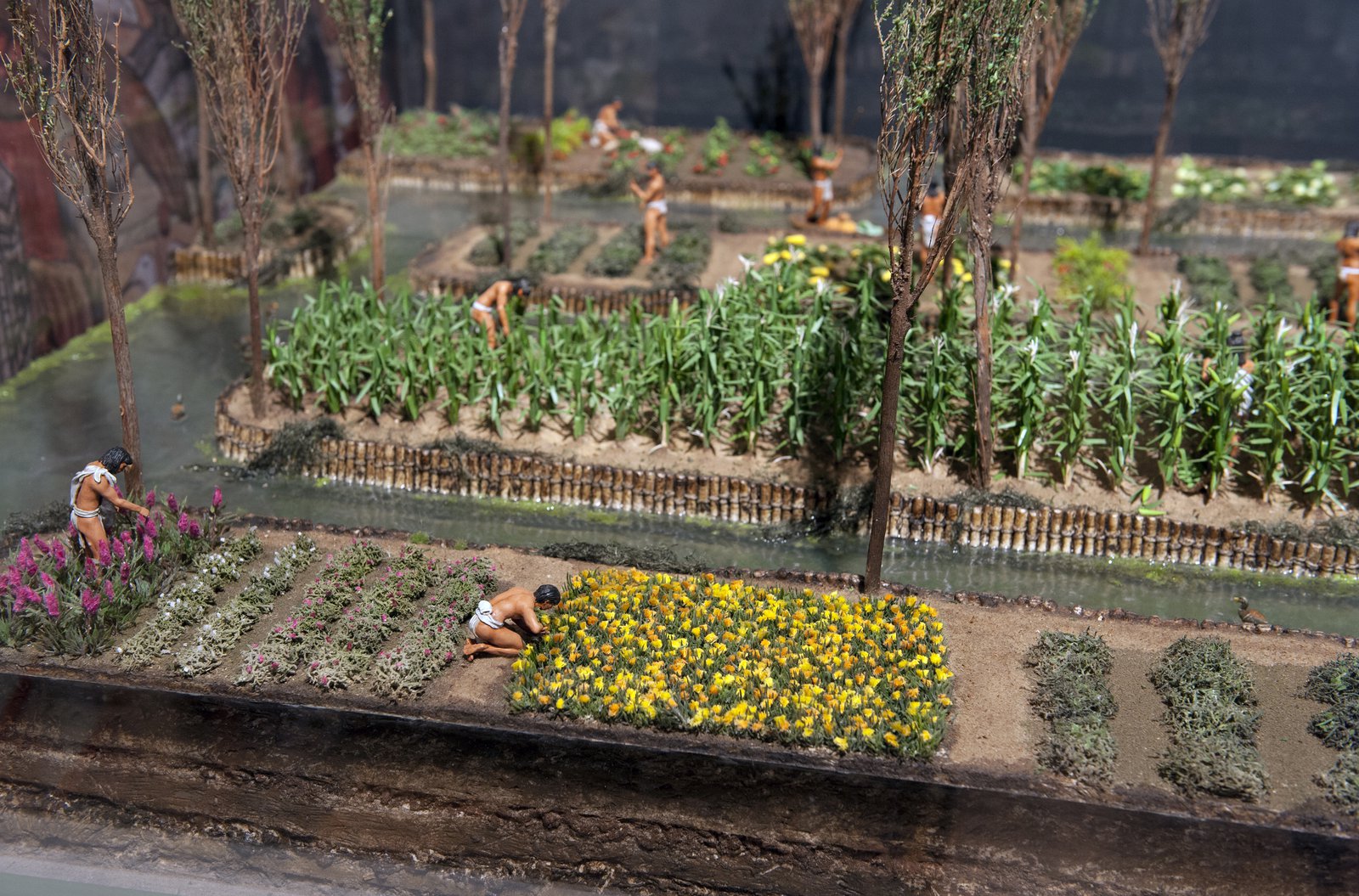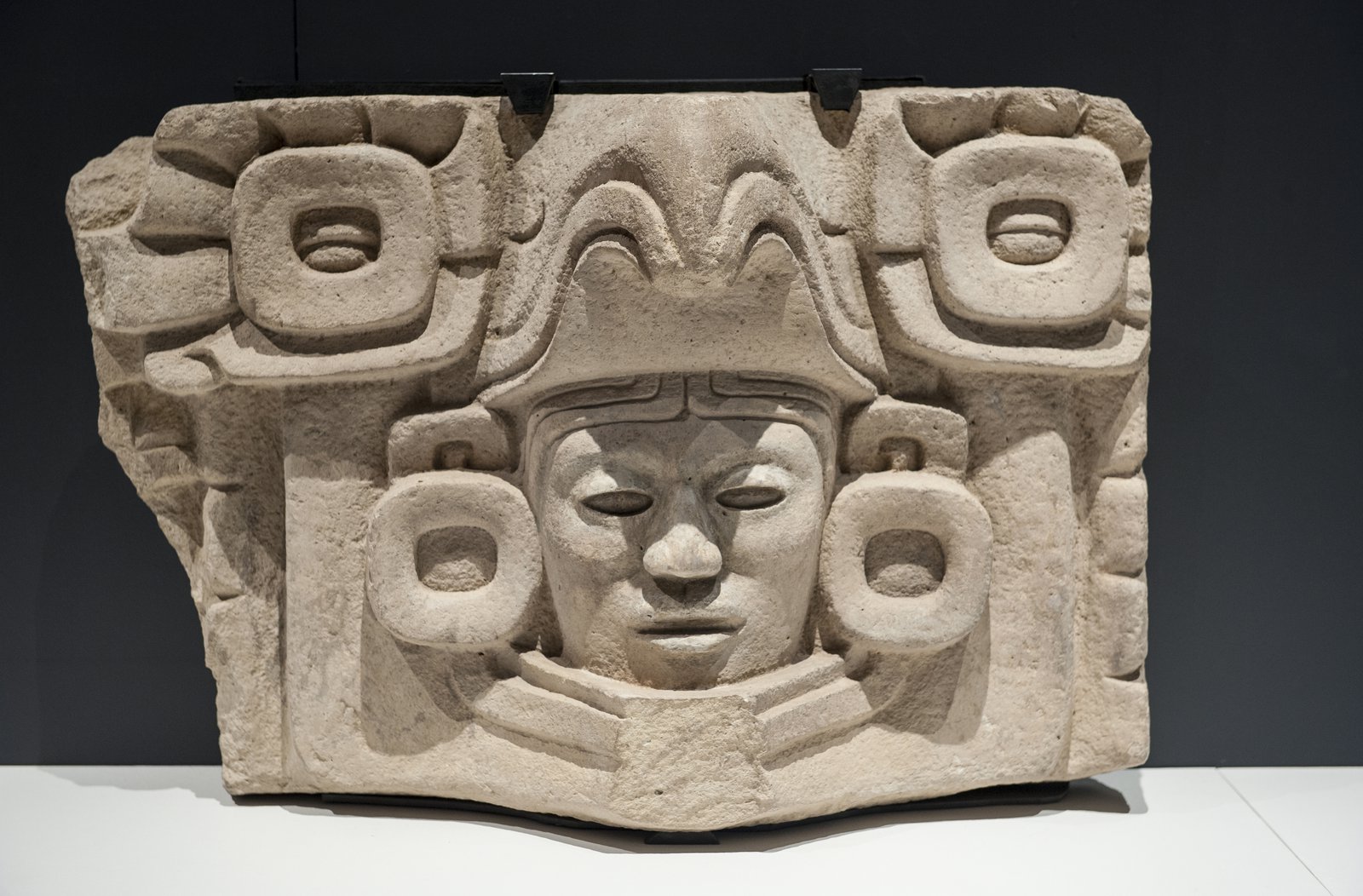Life among the Aztecs
So often the history of an empire or culture is told in terms of the grand things – rulers and nobles, war and conquest, politics and religion. While these are fascinating concepts, and are usually bloody and dramatic, they are often remote from those of us who lead relatively uneventful lives.
These were my thoughts as I started researching Aztecs, a new exhibition opening at the Australian Museum on 13 September. The story of the Aztec empire is truly epic in its scale – from nomads and outcasts, to a warrior state ruling a large part of southern Mexico, and then decimation by Spanish conquerors in 1521.

© Australian Museum
Yet somewhere on the fringes of this story were the ordinary people whose lives I can relate to: yes the commoners (although I do aspire to more!). Aztec society, particularly by the early 1500s, was highly complex and stratified.
The nobles held all the power and most of the wealth and privileges, and they managed the affairs of state. Below them were the commoners (macehualtin) – the industrious but powerless masses who worked the fields, plied their trade as merchants or artisans, and toiled for the nobles and state when required for tax.
Everyone knew their place and little could be done to change your status. In fact, overstepping the boundaries dividing these groups could bring enslavement or even death.
Mobility
If I was brave, ambitious and male, I might try to climb the social ladder by succeeding in warfare. A soldier who captured four enemies could become a government official or army captain and earn the right to wear increasingly splendid ornaments and clothing.
Greater wealth could also be obtained by becoming a successful merchant or artisan, so long as you didn’t flaunt your wealth in front of nobles, as you’d be deemed an upstart!
As a woman, my only real choice for upward mobility was through a good marriage – noble men could have more than one wife and were known to marry talented or beautiful commoners. This tactic was known to have worked for some men too – the daughter of emperor Itzcoatl fell in love with a commoner who then became a lord of his village.
For the vast majority of Aztecs, however, status remained defined and life followed the same pattern. The working day started at dawn, as men left to work in fields or on public labour projects while women readied the fire in preparation for a day of pounding maize, cooking, and making cloth.

© Australian Museum
For those of us lacking domestic artistry, it would have been a hard grind (no pun intended). Fortunately, for those like me, there was little variety in what was cooked. A basic meal comprised maize in one form or another (often tortillas), beans or squash. Tomatoes and wild greens provided dietary balance, as did the odd insect, fish, frog, waterfowl or turkey – the main meats available.
Nobles had far more variety, as they could afford expensive imported goods and also received tributes from their subjects. They were also allowed to drink chocolate. The only other people who could partake of this luxury were sacrificial victims. So while I might be a chocoholic in this life, I think I’ll skip it as an Aztec!
One of the few outlets for commoner women was the markets. Women were a frequent sight as they came to barter for goods, sell wares or socialise. Some were even specialist traders, one of their few employment opportunities outside the home (midwives and priests were the other options).
All Aztec commoners lived in calpulli, or neighbourhoods, of families and people in similar trades who farmed communally-owned land. Many commoners engaged in trade or crafts, some sporadically, others full-time. At one end of the scale were vendors selling garden surpluses or food, and craftsmen making basic household items. The big players occupied the other end: merchants known as pochteca dealt in luxury imports, while master artisans created featherwork and jewellery for nobles.
The markets were hothouses of social activity, but it was still the home and fields that dominated the lives of most commoners. Home was a single-storey mud-brick building (only nobles could have a second storey), with a kitchen, a room for sleeping and a shrine. Most homes had separate bathrooms, although public toilets were also common (placed along canals, these hung over boats which collected the waste for use as fertiliser).
Fashion
It was easy to spot a commoner as there were strict rules defining their appearance. For men, hair was generally short as they were not allowed the flowing tresses of the nobility. Clothing was practical and made from fibres of the maguey plant (which we know as agave). Imported cotton cloth was reserved for nobles – commoners could be executed if caught wearing it.
Men wore loincloths and cloaks; women tunics and skirts. Clothes were tied, since buttons, hooks and brooches were unknown. For young children, home schooling started at three years of age. By the teen years, everyone was at school – a compulsory system unheard of anywhere else at this time. Nobles, and sons of wealthy commoners, went to the calmecac to be priests, politicians or army commanders. Other boys learned fighting skills and their father’s trade at school, the telpochalli.
While noble girls learned religion and literacy, commoners perfected household skills. Strict discipline was part of the system; if children were rude to parents or teachers they could be pricked with spines, forced to inhale chilli smoke or sent to clean the streets.

© Australian Museum
Street life
That’s another surprising thing about the Aztecs – their cleanliness. While the streets may not have been as clean as ours, they were very clean for their time. Every day, each calpulli employed 1000 men to clean and sweep streets and buildings. Garbage was dumped at the edge of town or buried in courtyards. And most Aztecs bathed daily; no wonder they tried to douse the smelly Spanish with incense when they met!
As with all Aztecs, religion would have ruled my life. I’d be expected to participate in one of the innumerable festivals for the Empire’s main gods and regularly prick myself with sharp objects and offer my blood as a sacrifice. Omens and portents were to be feared, and even my destiny was governed by my birth sign (although one might escape a bad destiny through strict self-control).
And how would I end my day? What ‘down time’ would I have? I might play a bit of patolli, a type of board game, or some music. I could also watch, and bet on, the nobles playing the ball-game tlachtli. Going for a social drink was out of the question – alcohol was not allowed for commoners, and I could face execution if caught drunk in public more than once.
My suspicions are that I would have been too tired for anything but bed: even that simple mat on a dirt floor would seem a luxury after day as an Aztec commoner. Sweet dreams!




